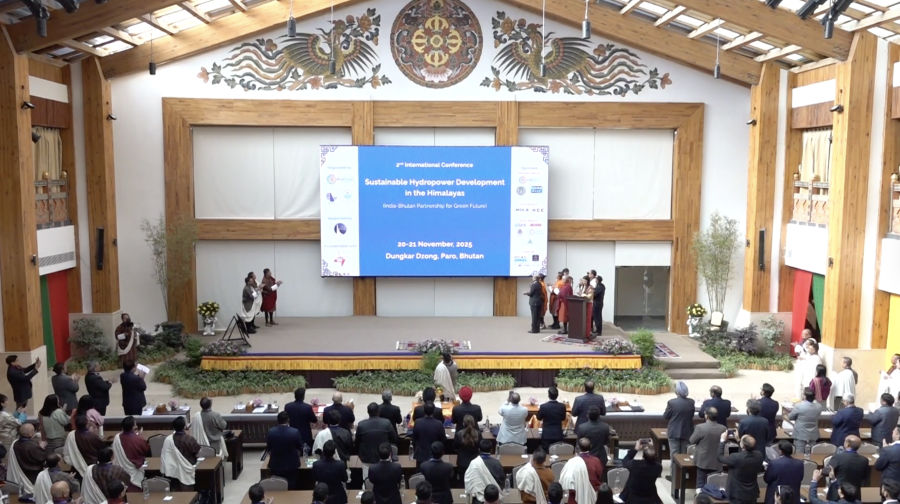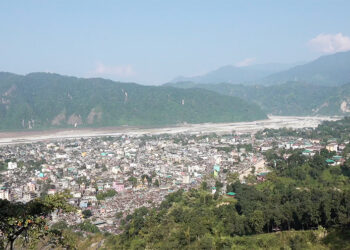 As climate pressures reshape the Himalayas, experts say it has become urgent to develop new ideas and technology to make hydropower systems climate-resilient. To achieve this, local and international experts have gathered in Paro for a two-day international conference.
As climate pressures reshape the Himalayas, experts say it has become urgent to develop new ideas and technology to make hydropower systems climate-resilient. To achieve this, local and international experts have gathered in Paro for a two-day international conference.
Discussions today centred on how traditional hydropower engineering must keep pace with rapidly changing river behaviour, rising sediment loads, and increasing risk from extreme weather events.
160 participants from four countries are taking part in the event organised by the Druk Green Power Corporation (DGPC), India’s Central Board of Irrigation and Power (CBIP) and the International Commission on Large Dams (ICOLD).
Speakers at the conference said that while hydropower remains Bhutan’s largest source of electricity and a major export earner, rising sediment loads, erratic monsoons and worsening landslides are creating new pressures on existing infrastructure.
They highlighted the urgent need to rethink how hydropower dams are designed and operated in the Himalayas.
“Frequency and magnitude of extreme events will increase due to climate change. Overtopping of Tala Dam in Bhutan on the 5th October 2025 is just a mild reminder that we need to improve dam safety by focusing on early warning systems and efficient operation and maintenance practices,” said Devendra Kumar Sharma, the President of ICOLD.
The Secretary General of the ICOLD, A.K. Dinkar said, “With the climate changing so rapidly, our dams, many built 40 to 50 years ago—need to be reassessed in terms of their design and construction. We must determine whether they remain manageable and identify any deficiencies that can be corrected.”
Alongside engineering concerns, policymakers stressed the need to diversify Bhutan’s clean energy mix to strengthen long-term resilience. The finance minister spoke about the country’s efforts to expand renewable options to uphold its carbon-neutral commitment while managing water security risks.
Finance Minister Lekey Dorji said, “Our focus is to enhance the development of other forms of renewable energy, such as solar and wind resources as well. Watershed and catchment area management is also a key component of the sustainable hydropower policy to ensure water security and to mitigate risk.”
Speakers added that while Bhutan is exploring other renewable energy sources, hydropower must remain a key focus. They said that this is because of the heavy investments made and its proven reliability as a source of energy.
“We have to harness all types of resources for energy, but at the same time, hydro can’t be ruled out. It has to be available because it is time-tested and it has been time-tested for centuries,” said K.K. Singh, the Director of CBIP.
Tomorrow’s sessions will cover climate adaptation, dam operations, and hydropower financing.
The insights gathered during the conference are expected to guide future design standards, safety protocols and investment planning for hydropower projects across the region.
Karma Samten Wangda, Paro
Edited by Yeshi Gyaltshen










